Maai and Personal Space in Iaido
copyright
© 2010 Kim Taylor, all rights reserved
Iaido is a difficult art to practice because we have no opponent,
or rather, our opponent is imaginary and invisible. In this article I
will discuss the concept of maai in relation to our impression of
personal space and I will examine the interpretation of iaido kata in
relation to this awareness of space.
Maai is often described
as the combative space, the attacking or killing distance between two
opponents. It has elements of time as well, and I will discuss that a
bit later. Personal space is defined as that distance around ourselves
that we are comfortable with. As people move into that space we become
uneasy. Personal space is something that we all feel, and I believe
that we can relate it in general terms to combative distance, or at
least use it to understand the maai of our imaginary opponent (kasso
teki) in iaido.
Personal space is not uniform around a
single person or between different people. Consider an elevator, there
is a reason why people, in this crowded situation, all face the same
direction (toward the doors). This provides us all with the minimum
personal space and the least discomfort. If you want to test this,
stand with your back facing the door, looking at the rest of the crowd.
You will notice that a space tends to open up between the rest of the
people and yourself. The same thing happens, to a lesser extent if you
face inward from the side of the elevator, at 90 degrees to the rest of
the people.
Now let's consider the first three techniques of
Omori ryu or Shoden, the first level of iaido practice in the Muso
Jikiden Eishin ryu or the Muso Shinden ryu. These kata are
Mae/Shohatto, Migi/Sato, and Hidari/Uto. The opponent is facing our
front, left and right sides respectively.
Let's examine Mae
first, with the opponent sitting facing us. I asked Tom and Chris, two
students of iaido to sit facing each other at the closest comfortable
distance. In the first photo (fig 1) you will see them about 9
wall-lines apart, or about two brackets apart.
 fig 1, Mae, minimum comfortable personal distance.
fig 1, Mae, minimum comfortable personal distance.At the end of the photos I again asked them to take the minimum comfortable distance apart and this is Fig 2.
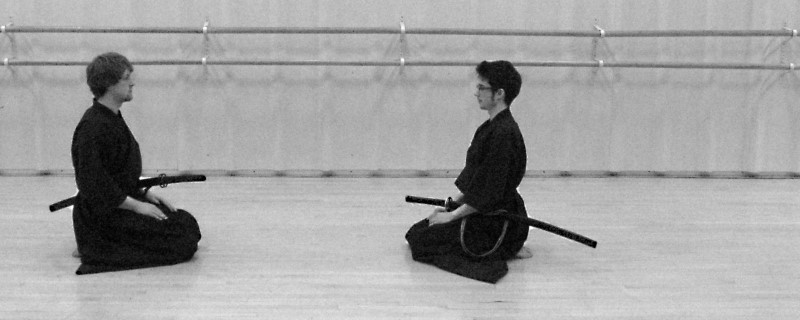 fig 2, Mae, minimum comfortable personal distance.
fig 2, Mae, minimum comfortable personal distance. Careful
counting shows that they are now 8 wall-lines apart, just slightly
closer than they were at the first of the photo session. This is fairly
consistent and I don't want to suggest that they are now a bit more
comfortable so are sitting 6 inches closer... that would be
extrapolating from too few data points.
Fig 3 shows how close
they are in relation to combative distance, they held their arms out to
measure how close they actually were.
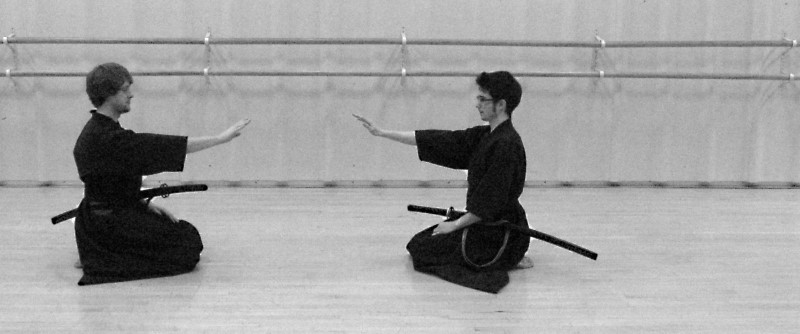 Fig 3, actual distance
Fig 3, actual distanceAs
is readily apparent, they are actually slightly outside sword-cutting
range, if they were holding their blades neither would touch the other
without rising onto their knees (and thus moving forward the length of
their shins).
So this minimum personal space seems to correspond well with maai for the first kata, Mae/Shohatto.
Fig
4. Moving to Migi and Hidari I first asked Tom (on the left) to sit as
close to Chris (who is facing Tom) as he was comfortable sitting.
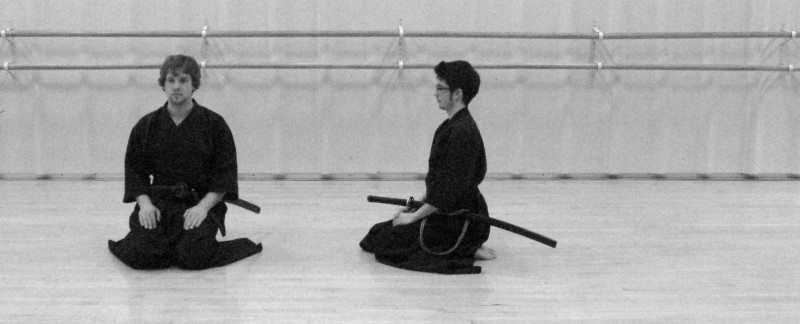 fig 4, Migi/Sato, minimum comfortable personal space
fig 4, Migi/Sato, minimum comfortable personal spaceHow close is he?
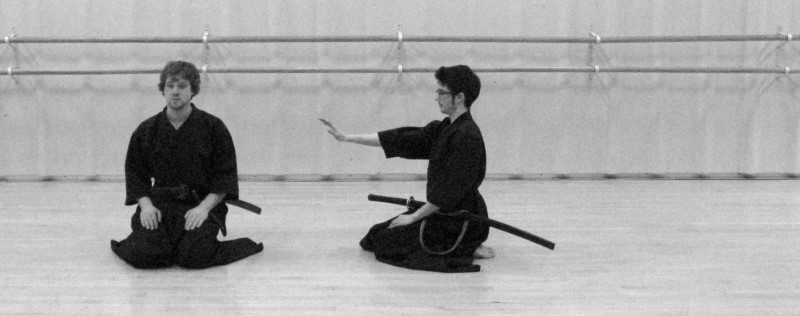 fig 5, Migi/Sato, actual combative distance
fig 5, Migi/Sato, actual combative distanceHe's
close, in fact he's within combative range, but not too far within to
prevent Tom from performing the kata and being at the correct range. It
seems that Tom's personal space doesn't extend as far to the side as it
does to the front. Interestingly, when I asked them to exchange
their positions so that we could see the situation for Hidari we get
the situation in figure 6 and 7.
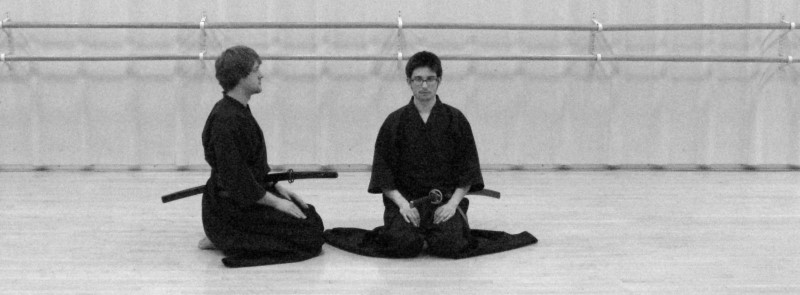
 figs. 6 and 7, Hidari/Uto personal distance and combative distance.
figs. 6 and 7, Hidari/Uto personal distance and combative distance.It
seems that Chris' personal space is not the same as Tom's. It is so
small that Chris would not be able to do the kata. Perhaps Chris
understands that he is now within Tom's combative range and so feels
safe from the sword at least. He is also almost, but not quite in
punching range, Tom would have to rise up/forward to reach his head
with his hand.
So, are Migi and Hidari correctly begun from
this seating arrangement? Let's look at the situation where the two
start by sitting side by side. Again I asked Tom and Chris to sit as
close as they were comfortable sitting. Figures 8 and 9 show the
results of one, then the other setting the distance. It seems that they
both have the same comfort zone toward someone facing the same way they
are facing.
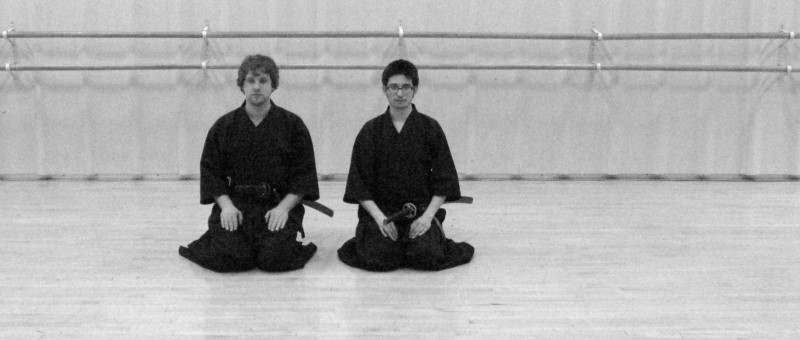
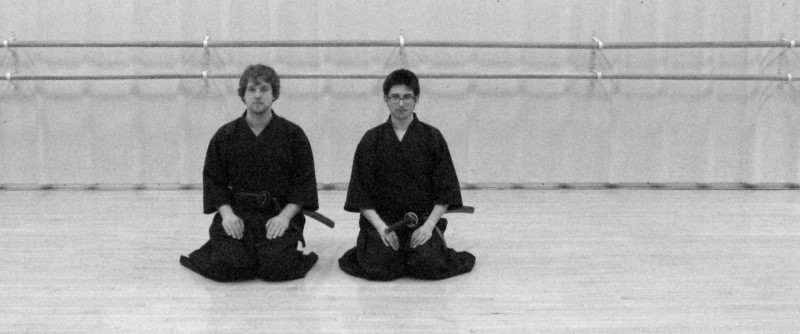 figs. 8 and 9, Tom, then Chris sitting as close as is comfortable to the other.
figs. 8 and 9, Tom, then Chris sitting as close as is comfortable to the other. So
where are our our imaginary opponents facing? In the first kata it is
reasonable to assume that they are facing us from the front. In the
second and third kata are our opponents
sitting side by side with us and then turning toward us to attack or
are they sitting initially at 90 degrees to us and starting their
attack from that point? I think it is pretty obvious that our opponent
must be sitting, facing us if we are to perform these kata as they are
taught, this investigation into personal space would indicate that our
opponent would be much too close if we began the kata with both of us
facing the same way and sitting comfortably close.
I don't
intend to suggest that this proves we cannot begin this kata from the
side by side position, we certainly could, all we need do is sit
further apart, but I do suggest that for us to be able to use the
feeling of personal space to help us "feel" our imaginary opponent, it
is better for us to have that ghostly enemy facing us. In that way we
can tap into our feelings about personal space to identify the
combative distance we need to deal with.
I
mentioned earlier
that I thought the relationship of maai and time should be examined. It
is apparent, on thinking about our past experiences, that personal
space will close up with familiarity (time). As we sit longer beside
someone we relax our space, think about a long bus ride beside a
stranger. This experience of time relates to combative distance as
well, it is obvious that we allow those we are familiar with to get
closer to us and so they would have better access than a stranger,
should they wish us harm. On a shorter time span, we can be also
be sucked
into a dangerous distance by the lack of reaction from our opponent
over time as our combative or personal space is invaded. This "drifting
into range" is a familiar sight in any Kendo match between opponents of
different skill levels.
Can we
use this feeling of personal space elsewhere in our iaido practice?
Consider the technique Tsuke Komi ( Gyakuto) which is as follows.
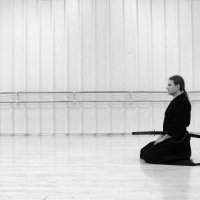 | 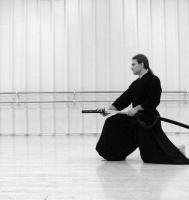 | 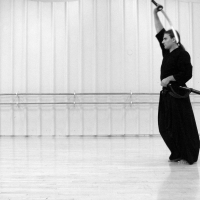 |  |
| The swordsman moves forward, drawing toward the opponent. This means
that he has moved into the opponent's combative (personal) space, which
forces the opponent to stop and cut short, to cut sooner than he
expected. The swordsman takes advantage of this and stands up to avoid
the short cut and immediately strikes into the opponent's forehead. |
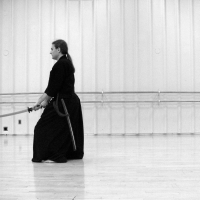 | 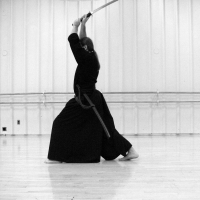 | 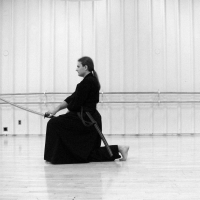 | |
| While
continuing to press into the opponent's personal space the swordsman
steps and cuts once more, cutting all the way down to horizontal. | Then the swordsman steps back , making distance to cut a third time but it is not necessary. | The swordsman sinks onto one knee and prepares to clean and put the sword away. |
Looked at with a partner:
 | 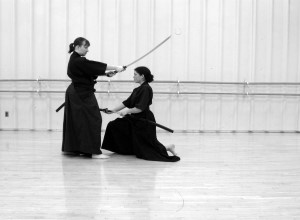 | 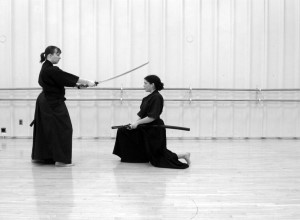 |
| Here is where the opponent (Kat) is intending to hit Pam. | If Pam moves forward inside the combative distance Kat cannot hit properly | So as Kat approaches, Pam moves into that space which forces Kat to shorten up her step and her swing |
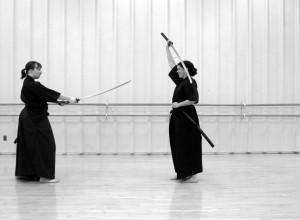 | 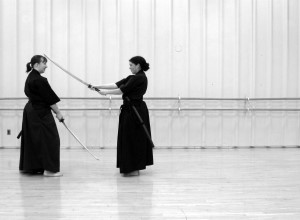 | |
| Which means that as Pam steps back and up she is out of range of the cut which allows her to continue the tecnique | with a return cut to the forehead. Note that Kat has swung down to
where she expected Pam to be, leaving space for Pam to enter and strike. | |
This
same driving into the opponent's personal/combative space happens again
in the technique Oi Kaze (Koranto). This technique is like Mae but
running forward. As an opponent walks toward us to draw and cut, we
grasp our sword and take two quick steps into his space. This means
that our opponent must back up to make enough space to draw and cut us,
at which time we chase with shorter steps, draw and cut him
horizontally, then finish with a vertical cut.
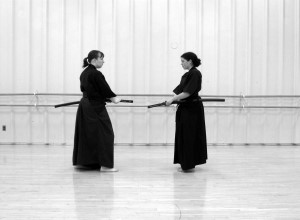 | 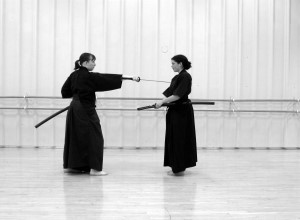 |
| Oi Kaze. In this case Kat intends to come to this position | And cut into Pam's shoulder with her draw and cut. |
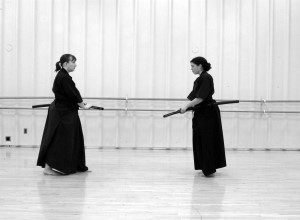 |  |
| But as Kat moves into that distance | Pam takes two steps into Kat's combative space which will force Kat to
start moving backward to get the distance to draw and cut. Pam chases
and cuts horizontally before Kat can do this. |
I have
argued that we can use our sense of personal space, that distance where
we begin to feel uncomfortable as someone comes closer to us, to get a
feel for the opponent in an iaito kata. Using this definition of
personal space I would also argue that combative space (maai) is the
same as personal space once a swordsman gains some experience. When
fighting or when doing a kata it should make us uncomfortable when an
opponent moves into attacking range. We can tap into our experience of
"too close" in everyday life to help us understand maai.
Kim
Taylor is a nanadan (7dan) in the Canadian Kendo Federation iaido
section. He is available for seminars in iaido, jodo and niten ichiryu.
http://seidokai.ca/
























